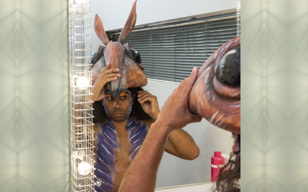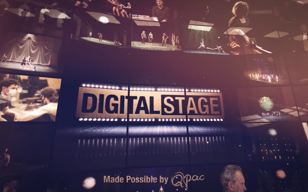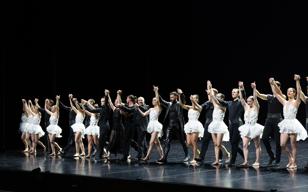Published: 14 February 2018
The word serendipity, from its coinage by Horace Walpole in 1754, has always had the sense of a felicitous conjunction of events by chance.
This delight in and of the unexpected is well known to improvisers, but I’m hesitant, as you will soon read, to ascribe too great a significance to it, as I feel it somehow puts too much weight on something so vague as to be almost supernatural, while perhaps undervaluing the extreme discipline that lies behind successful improvisation.
I’ve always been drawn to the music of Miles Davis. In 1964, his quintet played a concert at Philharmonic Hall in New York, recorded live and released originally on two LPs. One, My Funny Valentine features mainly ballads.
I must have heard that recording more than perhaps any other single record, and it still excites me through its marriage of elegance and swagger, taste and intelligence, structure and risk. At the beginning of the title track, Miles plays the famous first phrase of the melody, but far from crooning it with the world-weariness of a Chet Baker, he tears a hole in the air, climbs angrily into the upper register, before sinking finally into a place of dark despair. The ebb and flow of an unbridled anguish of the heart takes the abstracted lyric of the song into the realm of tragedy; perhaps only Billie Holiday could match it sob for sob. The band’s responses: the dignified, reduced accompaniment of pianist Herbie Hancock, the tenderness in the understatement of bassist Ron Carter and drummer Tony Williams, take this performance into the realm of the sublime. When the band finally settles into one of its effortlessly lithe grooves, the audience spontaneously applauds, relieved that they have made the passage from loneliness to optimism.
I have asked myself so many times: how is it possible that improvisation can reach these heights of supreme logic and clarity? Is it merely serendipitous that the instincts of these men defied the odds to produce a document of such lasting perfection on this one particular evening, magically captured by the Columbia recording engineers?
Music exerts an attraction to those who love it that is very hard to pinpoint. It causes obscure reactions: tears well, heads shake, feet tap, adrenalin flows; from the wellsprings of memory images and echoes bubble up, surprising us, catching us unawares. For the individual, it is a deeply personal experience, a connection, and yet music remains essentially a social situation. Jazz music, during its ‘golden age’, which in one view could be described historically as occurring between 1925 and 1975, lived ideally in a close and intimate, even conspiratorial, relationship to its adherents. Many of its most notorious venues were beneath street level, typically smoky, and firing until deep into the night. Part of its allure was its mystery; how could such eloquent musical statements be conjured out of the all-enveloping smoke, the notes and rhythms so cool, so dangerous? Or, indeed, in a concert hall, normally the métier of tails and starched shirts, the trappings of privilege? Of course, the reality for those who play the music today is that this historical rendering of the word jazz, with its associated images of Blue Note album covers, arcane jargon, machismo and, yes, widespread substance abuse, is exactly that: historical. Jazz is now the domain of the university, the conservatoire and cultural studies, investigated and interrogated from every possible perspective: gender, race, class, phenomenology, ontology. Most importantly, it has continued to evolve in ways that have seen it sonically depart from the narrative described through its arc from birth in New Orleans, its transmission via the new media of radio and recordings throughout the USA to a world excited by its palpable eros, its casual intellectualism, its nocturnal yearning, and its extraordinary artistic aspirations. It is precisely those aspirations that have lent it the many and varied forms that confuse even those of us who have built careers around the J-word as to its actual meaning. One thing, however, that is generally agreed upon is that jazz, whatever else it might contain, is to some degree improvised music, and thus to a perhaps greater degree than more formal, predetermined musical situations, at the mercy of chance. It is also a music that arose out of a cultural matrix in which the African slave diaspora played a leading role, and thus proposes powerful counter-narratives to the teleology of Western art music.
It is tempting to become excited about the possibilities of a music dominated by an unknown, by chance intersections and random, unpremeditated confluences. Jazz, indeed most improvised music, is, however, not really that. It is guided by agency.
Part of its allure was its mystery; how could such eloquent musical statements be conjured out of the all-enveloping smoke, the notes and rhythms so cool, so dangerous?
The music of the great composer/multi-instrumentalist/ philosopher Ornette Coleman allows chance factors particular leverage, in which the structural determinant is ‘harmolodics’, a notoriously difficult principle to define, in which all components of the music have an equal degree of independence, allowing in turn for a high degree of interdependence. But exactly how much of this can be described as ‘serendipitous’, and how much of it is determined by the specific structure of an individual musical personality – expressed as ‘style’ – and the resultant flowing interplay of strands that express this interdependence of individuals in a jazz performance, is moot. Listening closely to the Coleman quartet of the early 60s, with trumpeter Don Cherry, bassist Charlie Haden and either Billy Higgins or Ed Blackwell on drums, I am always struck by how the strength of each individual’s concept overrides the fact that there is no functioning harmonic structure underpinning the music. The resultant clear linearity sounds natural, coherent and easy to read, and yet spontaneity is at the heart of each note choice, every cymbal stroke. Coleman’s insistence on a universalism in which everything is interdependent, and the strength of his compositional ability in lending credibility to this concept, bears a conceptual relationship to particle physics, with its suggestion of the smallest particles existing in a relational aspect rather than a fixed position, and yet to describe this as serendipitous seems to be bordering on superstition. What is avoided in any romantic suggestion of serendipity, is agency, a fundamental principle in improvisation.
Yes, the decisions made in a jazz performance are supposedly transacted spontaneously, time stopping for no-one and without the luxury of an edit. But the training of every jazz musician has presumably led to that transactional instant, and the challenge therefore is how to turn the information absorbed during that process of training into music that we haven’t essentially heard before. The masters in the canon have been masters of surprise as much as virtuoso performers. Take Charlie Parker, the colossus of be-bop music, whose dizzying flights of fancy, unprecedented and hugely influential, created an entirely new way of thinking about jazz, drawing it away from the dance hall towards the bespoke club venue. Or Thelonious Monk, who brought the compositional and improvisational relationship in his performances into a tight and reflexive relationship. Or John Coltrane, whose sculpted, massive flights of molten intensity became a personal quest for transcendence. Or Miles Davis, himself a type of gesamtkunstwerk, in whom performance, high fashion and attitude fused in artistic journey that eventually challenged any orthodoxy about what jazz was supposed to be.
There is in any great improvisation a sense of inevitability. You hear it in the omnivorous frame of reference evident in Keith Jarrett’s solo concerts, which traverse and bridge worlds mediated through a panoramic vision and instrumental mastery. It can equally be experienced in the organic process-based explorations of Australian improvising piano trio The Necks, whose consistent adherence to an aesthetic of slowly emerging intensity has something quite natural in its directionality, yet never fails to surprise. There is some kinship here with the grand tradition of Hindustani classical music, in which improvisation plays a large role, and in which memory, custom and interplay work together to create an immediately recognisable cultural form, the serendipitous vagaries of the improvisational moment notwithstanding. We encounter it also in the manikay of the Yolngu of Arnhem Land, in which intense, tightly structured song forms allow for a variety of improvised contributions from the performers, whether textual or melodic, before giving way to silences (perhaps better described as sonic absences) of indeterminate length. At all times, in all of these examples, agency is paramount, whether bounded by encoded cultural conventions, or by the assumed freedoms of contemporary information exchange.
Having said all that, I’ve experienced the wonder of the unexpected occurring mid-flight onstage often enough to know that attempting to lock all the elements of improvisation, or creativity more generally, into an empirical box is of value only to the most hard-bitten Aristotelians. We should never cease to marvel at music made exclusively in real time only for the duration of its fragile life. But behind what seems to be serendipitous, spinning magically on the dime of chance, is based far more on technical mastery, listening and trust than on the roll of time’s dice. It would be difficult to take seriously improvised music, or indeed the numerous spontaneous nuances of notated music, were it any other way.

Professor Paul Grabowsky AO
Professor Paul Grabowsky AO is a pianist, composer, conductor and occasional commentator on arts matters. He has been a significant contributor to the Australian jazz and contemporary music scene, with over twenty albums as a leader. He has composed the scores for over twenty feature films, working particularly with directors Paul Cox, Fred Schepisi and John Irvin. He has written several works for the stage, with commissions from Opera Australia, Opera Queensland and Victorian Opera. He founded the Australian Art Orchestra in 1994, and led it until 2013. He directed the Queensland Music Festival in 2007, and the Adelaide Festival in 2010 and 2012. His numerous awards include six ARIAs, the 2001 Sidney Myer Performing Artist of the Year and the 2007 Melbourne Prize for Music. Paul was made an Officer of the Order of Australia in 2014 and is the Executive Director of the Monash University Academy of Performing Arts.
You May Also Like

Behind the Scenes
Our Behind the Scenes series takes you on an exclusive journey into the heart of QPAC, where the magic of the stage comes to life.

Projects and Events
QPAC is a creative hub where communities come together to celebrate, learn, and grow through the transformative power of the arts.

Digital Stage
On-demand performances, live streams and behind-the-scenes.

Support
Support QPAC to help nurture and celebrate Queensland's rich artistic heritage while fostering innovation and creativity for the future.


